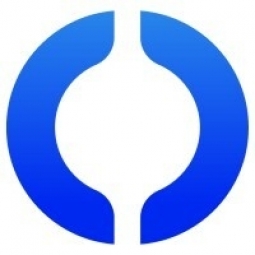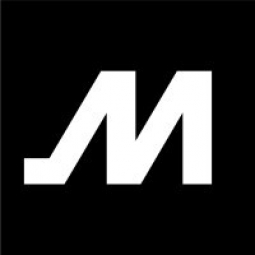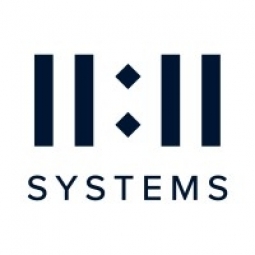实例探究.
添加案例
我们的案例数据库覆盖了全球物联网生态系统中的 18,927 家解决方案供应商。
您可以通过筛选条件进行快速浏览。
Download Excel
筛选条件
-
(5,794)
- (2,602)
- (1,765)
- (764)
- 查看全部
-
(5,073)
- (2,519)
- (1,260)
- (761)
- 查看全部
-
(4,407)
- (1,774)
- (1,292)
- (480)
- 查看全部
-
(4,158)
- (2,048)
- (1,256)
- (927)
- 查看全部
-
(2,488)
- (1,262)
- (472)
- (342)
- 查看全部
- 查看全部 15 技术
- (1,732)
- (1,626)
- (1,605)
- (1,461)
- (1,423)
- 查看全部 42 行业
- (5,782)
- (4,114)
- (3,091)
- (2,780)
- (2,671)
- 查看全部 13 功能区
- (2,568)
- (2,482)
- (1,866)
- (1,561)
- (1,537)
- 查看全部 127 用例
- (10,333)
- (3,499)
- (3,392)
- (2,982)
- (2,593)
- 查看全部 9 服务
- (503)
- (432)
- (382)
- (301)
- (246)
- 查看全部 737 供应商
Selected Filters

|
Systems Integrator Becomes “Virtual IT Department” for Customers with Remote Support Appliance
Beringer Associates, Inc. provides design, implementation, and support of Managed Network Services, VOIP phone systems, and CRM software to small and medium-sized businesses. They service over 300 devices and servers for these companies, alongside thousands of end-users. Their growth over the years has been largely based on their reputation for providing excellent service and support to their clients. However, serving customers with distributed sales and field services requires Beringer support reps to be able to access customer desktops no matter where they are located. In addition, many Beringer customers are in the financial services industry and are very concerned with security and audit capabilities. Unfortunately, none of the solutions they used in the past easily enabled remote access through firewalls or had sufficient auditing to meet these needs.
|
|

|
Not Mentioned
The customer purchased the PowerBroker privileged account management solution to reduce the risk from security breaches and meet compliance regulations. The challenges they faced included removing local admin rights from users and elevating privileges only when needed. They also needed to log, audit, and report on privileged activities.
|
|

|
Not Mentioned
The customer purchased the PowerBroker privileged account management solution to reduce risk from security breaches, meet compliance regulations, tighten operational practices, and lower the total cost of ownership. The solution was deployed to remove local admin rights from users, elevating privileges only when needed. The PowerBroker solution was also used to address compliance regulations such as Sarbanes-Oxley (SOX).
|
|

|
Powersolution Ensuring Customers Get the Support They Need
Powersolution, a New Jersey-based IT services company, was facing challenges in providing remote assistance to its clients. The company was using the Microsoft remote assistance feature on each customer’s operating software, which was a time-consuming and complex process. The company was also facing difficulties in supporting users who were working remotely and not connected to the client’s virtual private network. Powersolution recognized the need for an alternative solution to fulfill its promise of superb customer service.
|
|

|
UNC Healthcare: Delivering Effective IT Support Across A Healthcare System
The UNC Health Care system had a diverse set of remote support tools and user support workflows as a result of the acquisition over time of numerous regional hospitals, each with their own IT practices in place. UNC Health Care’s executive management set the goal of standardizing IT support across the healthcare system. In addition, UNC Health Care was planning to implement a new electronic health records and hospital management software system with twenty two different modules, and the IT department knew that implementation command center would need an efficient and effective way to provide training and support for thousands of users who would be learning to use the new software.
|
|

|
Multinational Bank Integrates PBUL to Achieve Global Compliance
The bank, a globally recognized multinational banking and financial services company, was faced with the challenge of meeting broad data privacy compliance requirements from over 99 countries. As cyber attacks, security breaches and data loss become more commonplace, lawmakers and regulators are seeking to put strong data security legal frameworks in place. The bank is subject to most of these compliance requirements. An internal audit at the bank developed a series of proposed internal policies to meet all the forthcoming compliance regulations with which the bank needed to comply. These proposed policies had three objectives: enable compliance to these regulations across the world; increase protection for their servers, infrastructure, and the data they contain; and support a corporate objective to improve and sustain consumer confidence. To meet these objectives and implement the proposed internal policies, an aggressive reevaluation and investment in their IT security strategy and privilege management practices was needed.
|
|

|
Case Study: Birmingham Women’s & Children’s NHS Foundation Trust Better Remote Support for A Leading UK Healthcare Provider
Birmingham Women’s and Children’s NHS Foundation Trust faced the challenge of providing quick, efficient, and secure assistance to their remote staff. The staff often connected to the network from home via VPN, particularly on smart devices such as tablets, which had been a challenge for many years. An additional issue was accommodating third parties or contractors who required access to the Trust’s network. It was essential for the Trust to maintain absolute control and oversight of third-party access, only granting entry to the necessary systems and data. The Trust and its staff handle incredibly sensitive information and are accountable under regulations including the Data Protection Act, the General Data Protection Regulation (GDPR), and local governance policies.
|
|

|
Case Study: Morris School District - Distance Learning Now Set up for Success with Beyondtrust Remote Support
Morris School District, located in Morristown, New Jersey, has 10 public school buildings serving 5,200 students in grades pre-K through 12. The school district employs more than 900 teachers and staff. The district is an active member of the League of Innovative Schools, a consortium of 114 independent school districts committed to helping K-12 schools rise up to address education challenges by fostering the innovative use of technology in learning. Like many school systems, Morris School District has diverse end users, which include teachers, students, and other staffers such as school psychologists, guidance counselors, aides, and school nurses. To help keep COVID-19 at bay, many of these users work remotely all or part of the week. However, what was not anticipated was the necessity of minimizing in-person interactions in response to COVID-19.
|
|

|
Case Study: Chronopost - Remote Access Solutions Extend Security While Saving Time and Money
Chronopost, a leading national player in the express delivery of parcels from France to companies and individuals worldwide, was looking for a remote support solution that could easily integrate into their environment, provide security for both the customer and Chronopost, and could be used fully on the web with minimal disruption to customers’ workstations. They also needed a solution that was compatible with hybrid environments and could support a diverse range of platforms. Additionally, Chronopost needed to extend privileged access security best practices beyond the perimeter to remote workers and third-party vendors. They needed to granularly control the level of access for each of these groups, gain complete visibility and auditability into what was done with that access, and integrate with other service desk tools.
|
|

|
Case Study: Asklepios Kliniken - Leading Clinic Operator Achieves Compliance & Efficiency Goals
Asklepios Kliniken, one of the largest private clinic operators in Germany, faced the challenge of meeting highly complex requirements for IT password management. They needed to manage, monitor, and control privileged credentials and control access to on-premises, cloud, and hybrid infrastructures. The IT division of Asklepios Kliniken required a solution for efficient and secure password storage, session management, and allocation of credentials. The company needed to comply with comprehensive compliance guidelines, and legally compliant logging of all administrative work was indispensable. They needed to track who worked with which server and when, even with external partners.
|
|

|
Teton Sports Enjoys Monumental Success with the Help of Fishbowl’s Advanced Inventory Management
TETON Sports, a company selling outdoor gear and clothing, was facing challenges in managing its inventory. The company was using Excel spreadsheets for inventory management which was time-consuming and inefficient. The warehouse layout was not optimized for the picking process, causing delays. Moreover, orders from Amazon had to be manually entered into their inventory records. The company was in need of an inventory solution that would integrate with QuickBooks.
|
|

|
Red-X Medical Saved $60,000 and Hundreds of Man-Hours in Their First Year of Using Fishbowl’s Inventory Control Features
Red-X Medical, a rapidly expanding pharmaceutical distributor, was in need of an inventory software that could integrate with QuickBooks and streamline their day-to-day processes. It was crucial for the software to track lot numbers to comply with industry standards. The company also required a system where sales representatives could view real-time inventory and accomplish all daily tasks in one place. Furthermore, Red-X was looking for a software that allowed third-party integration to comply with Pedigree laws and input necessary pedigree documentation for each product.
|
|

|
Sanacare Meets Patients’ Needs and FDA Requirements with the Aid of Fishbowl
SanaCare, an international distributor of medical products, was facing challenges in managing its inventory and meeting FDA requirements for traceability of medical goods. The company had grown significantly since its inception in 1995, and the existing manual processes for inventory management were no longer sufficient. The company needed a solution that could automate the process of capturing product information, including lot number and serial number, and inputting it onto the patient's record. This was crucial to comply with FDA regulations and maintain good customer relations.
|
|

|
QlikView helps optimize vital resources across Region Skåne intensive care units
The intensive care units within the Swedish healthcare organization Region Skåne handle patients that need around-the-clock observation and treatment due to very complicated health conditions. All employees are specially educated in intensive care methods and are continuously trained to be able to offer the best possible treatments at all times. The intensive care unit employ approximately 900 people throughout Region Skåne. Intensive care is the most resource intensive area within healthcare and therefore the need for follow up and optimization is particularly great. Region Skåne runs a unique cooperation between its five largest hospitals. For a few years now, the intensive care units have systematically developed common job descriptions for all healthcare tasks. This makes it possible to compare invested resources and results between the hospitals and thereby also draw valuable and meaningful conclusions about how to improve their quality and efficiency.
|
|

|
Seeing Is Believing: How Visualizing Data Translates to Better Service for Our Community
The Town of Oakville, located in Canada, had a wealth of data but lacked the tools for effective analysis and visualization. The existing tool, QlikView, was maintained by IT staff and was not user-friendly for everyday staff. The town needed a solution that was easy to use and could be utilized by a wider pool of employees. The goal was to enable staff to create and use their own dashboards, thereby promoting data literacy and self-service. The town also wanted to ensure data integrity and accuracy, as the insights drawn from data are only as good as the information placed into the system.
|
|

|
VodafoneZiggo’s data transformation
VodafoneZiggo, a merger of two prominent providers in the Netherlands, faced a complex environment with many legacy tools, different techniques, and processes. The company had over 10,000 reports, leading to many versions of the truth. The company needed a tool that would enable it to merge all its data and processes. The company's ambition was to create the most enjoyable digital customer experience, blending the best of technology and human interaction in a personal, instant, and easy way. They also aimed to be the employer of choice.
|
|

|
Takeuchi unearths data transformation
Takeuchi is a Japanese compact construction equipment company that has a presence in Australia, Europe, Asia, the UK, and the USA. The company is a pioneer in the construction industry, building the world's first 360° full-turn compact excavator in 1971 and the first compact track loader in 1986. Despite its leading share of the compact equipment market, Takeuchi US is constantly threatened by new players. Effective business intelligence (BI) is vital for the company to remain competitive. However, prior to 2019, there was no automated process for obtaining that data. The company relied on complex and time-consuming Excel spreadsheets and SQL reports. It could take up to two weeks for one dedicated person to assemble the mid- and year-end reviews, and additional time for those supplying the necessary data points.
|
|

|
Grab-and-go Food Retailer yields insights
Hyakunousha International Limited, a Japanese omusubi store operator, faced challenges in obtaining timely sales data from its over 100 stores. The company's existing system only provided standard reports, which then had to be manipulated to gain useful insights. This slow process of data analysis was inefficient and did not support the company's need for up-to-the-minute sales data to plan and manage its operations. Furthermore, Hyakunousha wanted to provide user-friendly tools that staff could use independently to gain the insights they needed. The company aimed to create a 'data-savvy' culture where staff routinely made use of data and data analysis to support planning and decision-making.
|
|

|
Nabtesco connects data to business value
Nabtesco, a Japanese manufacturer of industrial robots and hydraulic equipment, was facing intense global competition. The demand for quality, cost, delivery, and service (QCDS) had increased, and Nabtesco needed to innovate its manufacturing processes to stay competitive. The company recognized the need for data-driven decision making to improve its marketing capabilities and anticipate client demands. However, they were not fully utilizing the data they collected as a management resource. Existing databases and spreadsheets were cumbersome and often crashed when handling large amounts of data. Some companies within the group had started using Business Intelligence (BI) tools, but they hadn't fully mastered their capabilities.
|
|

|
Case Study: Spireon Fleet & Asset Intelligence and Tutle & Tutle Trucking
Tutle & Tutle Trucking, a Texas-based company that manages a fleet of 650 bulk trailers, was facing a significant issue with theft. The company was losing two to three trailers each year, each worth an estimated $60,000, often carrying up to $20,000 worth of sand. The loss of these trailers not only represented a direct financial loss but also resulted in a significant loss of productivity. Without any sort of tracking solution in place, the recovery of stolen trailers was nearly impossible. The company was stretched so thin that if one trailer was stolen, it might mean one or two of their employees would be out of work for a while until a replacement trailer was up and running. The company was in need of a solution that would provide real-time information on the location and status of its fleet.
|
|

|
FleetLocate Alerts Boost Safety, Efficiencies at Fast-Moving 34-Vehicle Fleet: H&H Concrete on Demand
H&H Concrete on Demand was facing challenges with their previous fleet tracking solutions. The first solution was outdated and the second one was not meeting their needs. It would take 90 seconds just to find a truck, and its units kept triggering the check engine light on their vehicles. The provider promised the ability to use ELD logs without cellular service, yet the Wi-Fi tablets it provided never worked correctly. The company was in need of a reliable, efficient, and user-friendly fleet tracking solution.
|
|

|
Keep Truck in Case study
Trade Star Energy, an oil and gas company based in Saint George, Utah, had a fleet of 196 drivers spread out over several states. The drivers recorded their logs on paper, which presented significant challenges for DOT compliance. The company's Senior Operations Manager, Kari Gibb, had to wait until the drivers returned to Saint George to drop off their logs. He then manually audited each log, checking for Form & Manner errors or Hours of Service (HOS) violations. The distance the drivers traveled, coupled with the slow audit process, resulted in many errors in the logs. Kari had evaluated electronic logs throughout his career, but found them either too expensive or not meeting the needs of an oil hauling carrier like Trade Star.
|
|

|
Keep Truck in Case study
Sierra Mountain Express, an automotive hauler with a fleet size of 260 vehicles, was an early adopter of Electronic Logging Devices (ELDs). They had been using Rand McNally's ELD for years. However, when Rand McNally required a hardware change, Sierra Mountain Express decided to explore other options in the ELD market. Their goal was to find a modern, easy-to-use solution at a fair price. They evaluated five different ELDs before deciding on KeepTruckin.
|
|

|
Keep Truck in Flying Star Transport Case Study
Flying Star Transport, a company in the oil and gas industry, had been using Electronic Logging Devices (ELDs) for 15 years. However, the proprietary environment of their former ELD provider was starting to limit their opportunities to integrate and innovate operations. Additionally, the hardware was becoming outdated and required a significant investment to replace. This led Flying Star to evaluate the current offerings in the ELD market. They found that many of the solutions lacked product maturity and felt like they were teaching trucking to some of the vendors.
|
|

|
Keep Truck in - ARL Transport LLC Case Study
ARL Transport was in search of an Electronic Logging Device (ELD) solution that their 450 owner-operators would find easy to use. They had previously worked with another ELD provider, but were dissatisfied with the lack of customer support. The company's high standards for customer service were not met by the previous provider, leading to the need for a new solution. The company's IT Director, Tom Lioi, and Logs and IFTA Professional, Ben Bonasso, began the process by asking their owner-operators what they wanted out of a solution. The overwhelming response was ease-of-use, with many stating they were already using the free KeepTruckin elog application for this reason.
|
|

|
Keep Truck in Carolina Logistic Case Study
Carolina Logistic, a general freight company with a fleet size of 450, initially adopted the Transflo Hours of Service app for their Electronic Logging Device (ELD) needs. However, they encountered issues with the mobile application during the rollout. As the mandate for ELDs was approaching quickly, they felt the need to find a solution they were more confident in. This prompted Carolina Logistic to re-evaluate their ELD options. They were looking for an easy-to-use and reliable mobile application with excellent customer support.
|
|

|
Keep Truck in Miller Expedited Freight, Inc. Case Study
Miller Expedited Freight, Inc., a family-owned company with 21 years of experience in the trucking industry, was facing challenges in monitoring and improving the driving habits of their drivers. Before the implementation of the KeepTruckin Smart Dashcam, the company had to rely on the driver's description of any event or accident, which could be imperfect due to human memory. The company also faced safety concerns at certain facilities that were reported to be hazardous for entering and exiting their docks. The company needed a reliable and effective solution to these challenges.
|
|

|
Geospatial intelligence company Leica Geosystems leverages iland, now 11:11 Systems, cloud solutions to grow and scale.
Leica Geosystems, a company with a 200-year history, faced a significant challenge when it launched its SmartNet business in 2010. The company had to transition from a traditional sales business model to a subscription business model, which was a radical shift. The new business model required a network of GPS receivers throughout North America, with data from these receivers being streamed back to central servers and accessed by users in real time on a subscription basis. This presented numerous challenges, including the need to scale quickly and easily, limited in-house VMware knowledge, and the need for equipment that was available 24x7. The company also faced challenges with expansion, as every time they needed to purchase additional servers or software, they had to put in a fixed asset request which slowed the process down.
|
|

|
In 11:11 Systems, SteelDome Cyber Finds like-minded cloud partner
SteelDome Cyber, a global data protection and storage company, was struggling with unpredictable cloud costs and pricing models. The company's cybersecurity solutions are designed to leverage the security and flexibility of the public cloud. However, to guarantee fair and predictable pricing to its customers, SteelDome needed the same guarantee from its own cloud service provider. Before partnering with 11:11 Systems for Infrastructure as a Service (IaaS) and object storage, SteelDome tried its hand with a few of the large hyperscalers. What they found were cost-related guessing games and rampant uncertainty.
|
|

|
Tree Top simplifies business continuity strategy with 11:11 Systems and Veeam
Tree Top, a global business with over 1,000 growers, engineers, and food scientists, was facing several challenges. The company's primary infrastructure was still being backed up on premises via physical disk, which was not in line with industry best practices. They lacked offsite backup and disaster recovery, and their aging infrastructure was in need of a refresh. They also needed secure and reliable access to data, and were concerned about the potential costs of unplanned downtime. To address these issues, they needed to replace much of their existing legacy infrastructure.
|
|

